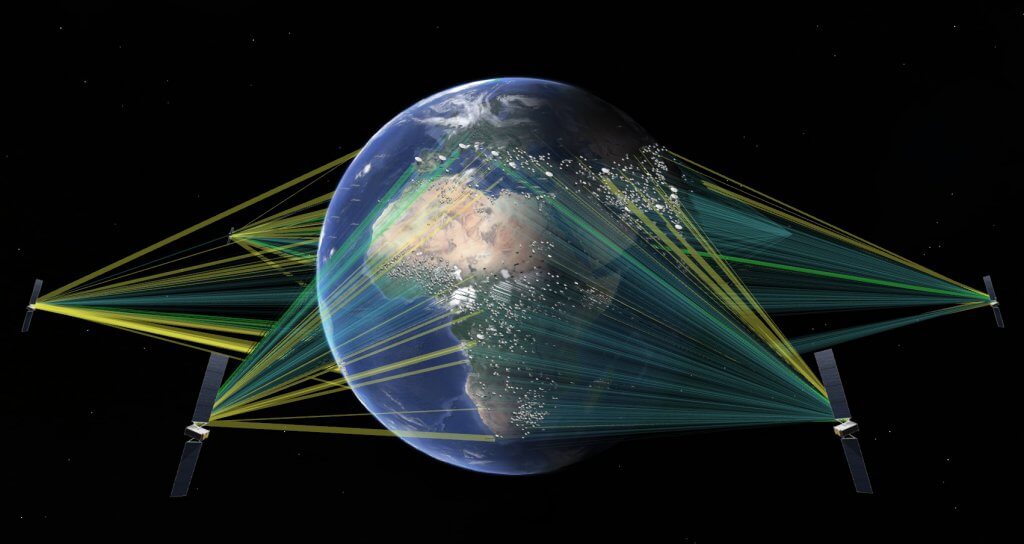Global satellite operator SES has ordered seven 702 bus/platform design satellites from Boeing to become a successor to its current O3b Medium Earth Orbit high capacity communications constellation. The new constellation is called O3b mPower and will be launched from 2021 onwards.

Diagram showing the initial O3b mPower constellation. Courtesy: SES
Proponents and opponents of low Earth orbit constellation vs geostationary satellites keep arguing about their relative merits: LEO latency (signal delay) is much better than that via GEO satellites; for proper coverage LEO requires investing in hundreds of spacecraft compared with just a few in GEO; there is better higher latitude coverage by LEO constellations compared with GEO; fewer ground stations are required by GEO while LEO systems require complicated inter-satellite links (especially for over water coverage); GEO systems are more economic to launch than LEO; there is more “spare spacecraft” constellation redundancy in LEO than GEO…and so on… However, there was an apparent middle course between these two options: medium Earth orbit (MEO). That is, a smaller constellation in MEO would offer better latency, coverage and redundancy over GEO, but would be more economic to implement than LEO.
O3B took this idea and proved that a 20-satellite constellation (which is still being completed) could work even in the harsher radiation environment in MEO.
Global satellite operator SES bought into this and is now, under O3B’s new name of SES Networks, planning a new, much more powerful constellation, O3B mPower. These high-throughput MEO satellites use phased array antenna technology to offer very high data speeds of up to 10 terabits per second via 30,000 spot beams. The coverage would initially be between 50 degrees north and 50 degrees south. Importantly, and with the maritime market in mind, the system will (with more satellites) eventually be able to offer super-high bandwidth services anywhere in the world.







